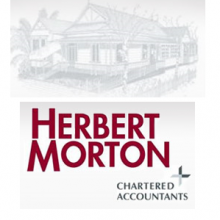Masterpoints explained
By Bruce - Posted on 23 August 2013
Master Points - What Are They All About???
Click on the link below to see the NZ Bridge explanation of your masterpoints as the explanation below is now a little dated.
NZBridge Masterpoints explained
And on the next link to see the updated masterpoint tables
NZBridge Masterpoints Tables
For more detailed information read Bruce's article below.
By Bruce Owen (Acknowledgment: NZ Bridge)
Every now and again we get those little white bits of paper with C points and the like all over them. What does all this mean?
The main objective of these is to measure and record the achievements of players of duplicate bridge in clubs affiliated to the New Zealand Association. There are three categories:
C Points - earned by players who finish in the top third placings of each club or tournament session (in each direction if a Mitchell style movement is played).
B Points - each one is equal to 100 C points. You can never have more than 99 C points, since once you earn another one, it converts to a B point. You can also earn a B point outright by winning a session at a B point tournament. If it is say a 5B tournament you also earn five B points for winning it and then there is a sliding scale going down, depending on the number of pairs.
A Points - Awarded to players who are session winners or in the top placings of A point approved tournaments. The points awarded are on the same principle as with B point tournaments.
It is the C points that you earn at club sessions that make up most of those on your certificates. It is important to note they apply to GROSS placings only. Handicap results do NOT count.
Regardless of the amount of pairs, you always get 40 C points for finishing first in a club session or in a 3B or 5B tournament session.
If there are 8-10 pairs the 2nd place pair gets 27 C points and the 3rd placed pair gets 13 C points.
If there are 11-13 pairs the C points are 30, 20, and 10, for 2nd, 3rd, and 4th respectively.
See the attached document called “C Points” to see the full table up to 28 pairs. It is quite common for 11 tables to play a Hesitation Mitchell or Twist and Bungee movement. These are not scored NS and EW, but as one field, so in that case the 20-22 pairs number is used, so all pairs in the top 7 will earn C points.
You also earn C points if playing in a teams or Swiss Pairs event at the club and that is explained in the attached C Points document.
So if you are playing regular sessions it is not too hard to accumulate C points and remember 100 C points converts to 1 B point (B points do not convert to A points, you have to earn A points at an A point tournament).
But how does this all relate to your grading as Junior, Intermediate or Open? Now it gets complicated. Your grading depends on how many "rating points" you have. These are calculated by adding all your A and B points together but at the end of the calendar year this total is depreciated by 20% (with figures rounded as per normal methods). So let’s say in your first year of bridge you accumulate 6 B points. At the start of the following year you would have 5 rating points. The following year you earn another 15 B points. So 5 + 15 = 20, depreciate this by 20% and you would start the next year with 16 rating points.
It is the Rating Points that determine your grade. There are 3 grades: Junior, Intermediate, Open
As well as a grade, you also have a rank There are 10 ranks ranging from “Certificate of Proficiency” to “Gold Grand Master”
NZ Bridge have been tinkering with what constitutes a Junior, Intermediate, or Open player in recent years and your rank does affect your grade. The attached document: Gradings and Rankings” which I have copied and slightly adapted from the NZ Bridge website explains these fairly well.
The vast majority of players in NZ are graded Junior and Intermediate and only elite players reach the upper echelon of being Grand Masters! The attached document: “Top 100 Masterpoint Earners” may be of interest. These players at the top play a lot of bridge!
You can see your current Masterpoint total, grade, and rank at any time by visiting the NZ Bridge web site, clicking on Masterpoints, and entering your name or computer number. This is open information so you can look at anyone else’s too!



